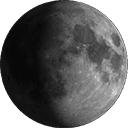Multimodality of rich clusters from the SDSS DR8 within the supercluster-void network
Author(s): Einasto, M.; Liivamaegi, L. J.; Tempel, E.; et al.
Source: ASTRONOMY & ASTROPHYSICS Volume: 542 Article Number: A36 DOI: 10.1051/0004-6361/201219119 Published: JUN 2012
Context. The study of the properties of galaxy clusters and their environment gives us information about the formation and evolution of galaxies, groups and clusters, and larger structures – superclusters of galaxies and the whole cosmic web.
Aims. We study the relations between the multimodality of galaxy clusters drawn from the SDSS DR8 and the environment where they reside. As cluster environment we consider the global luminosity density field, supercluster membership, and supercluster morphology.
Methods. We use 3D normal mixture modelling, the Dressler-Shectman test, and the peculiar velocity of cluster main galaxies as signatures of multimodality of clusters. We calculate the luminosity density field to study the environmental densities around clusters, and to find superclusters where clusters reside. We determine the morphology of superclusters with the Minkowski functionals and compare the properties of clusters in superclusters of different morphology. We apply principal component analysis to study the relations between the multimodality parameters of clusters and their environment simultaneously.
Results. Multimodal clusters reside in higher density environment than unimodal clusters. Clusters in superclusters have higher probability to have substructure than isolated clusters. The superclusters can be divided into two main morphological types, spiders and filaments. Clusters in superclusters of spider morphology have higher probabilities to have substructure and larger peculiar velocities of their main galaxies than clusters in superclusters of filament morphology. The most luminous clusters are located in the high-density cores of rich superclusters. Five of seven most luminous clusters, and five of seven most multimodal clusters reside in spider-type superclusters; four of seven most unimodal clusters reside in filament-type superclusters.
Conclusions. Our study shows the importance of the role of superclusters as high density environment, which affects the properties of galaxy systems in them.






